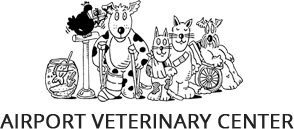Since 1982
Airport Veterinary Center
Trusted Veterinary Care in Wappingers Falls, NY
For over 45 years, Airport Veterinary Center in Wappingers Falls has been dedicated to keeping your pets happy and healthy throughout Lagrange, Hopewell Junction, Fishkill, Poughkeepsie, Wappinger, Dutchess County, and beyond. As a small, independent clinic, we pride ourselves on delivering expert care in a warm environment where your pets feel at ease and you can feel part of a true veterinary family.
Visit us today to start your pet on a healthcare journey defined by dedication, compassion, and friendly face-to-face consultations every step of the way.
Comprehensive Veterinary Services for Your Pet
At Airport Veterinary Center, we care for your pets with the same love, patience, and commitment we’d want for our own. Our services include:
Preventative Care & Wellness Exams
Annual check-ups, vaccinations, and screenings to keep your pet in top shape
In-House Diagnostics & Lab Work
Results returned in under 25 minutes for swift treatment decisions
Surgical & Dental Care
Prioritizing safety and comfort during routine cleanings to advanced surgical care
Why Choose Us?
We know your pets are your family, and with our compassionate approach to care, we strive to earn their trust as well as yours. Here’s why, since 1982, Airport Veterinary Center has been the top choice for pet owners in Dutchess County and surrounding areas:
Care with a Personal Touch
It’s no surprise why we’re in this line of work: we love pets and the people who care for them! And as your pet care provider, we focus on supporting their health with transparent two-way client conversations and all the adoration your four-legged family could want.
Experienced & Trusted Team
With over four decades of expertise, Dr. Jay Weiss and our team have built a reputation for compassionate, high-quality veterinary care. Whether you need routine care, an in-depth procedure, or just everyday veterinary advice, we’re here to provide it with a smile and a neighborly attitude.
Full-Service Care
Between our advanced on-site diagnostics laboratory, our pristine surgical suite, and our comprehensive pet dentistry, we’re equipped to serve as your comprehensive resource for all things related to pet healthcare.
get to know us
Meet Our Veterinary Team
Our compassionate team is dedicated to providing the highest level of care for your furry family members. With extensive experience and a passion for helping animals get back to full health, we’re here to give every pet we see the love and attention they deserve.
Thank You for Making Us a Top-Rated Vet in Wappingers Falls
Our clients are at the heart of everything we do. See why pet owners in Lagrange, Hopewell Junction, Fishkill, Poughkeepsie, Wappinger, Dutchess County, and beyond trust us with their pets’ health.


